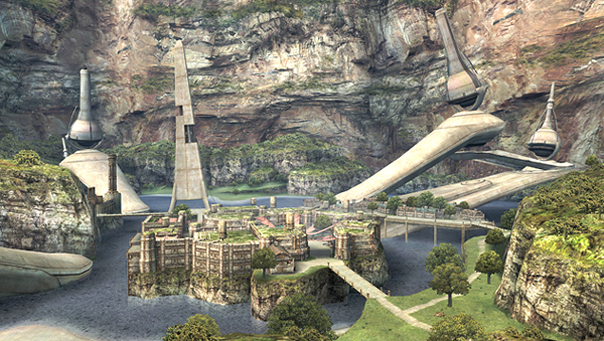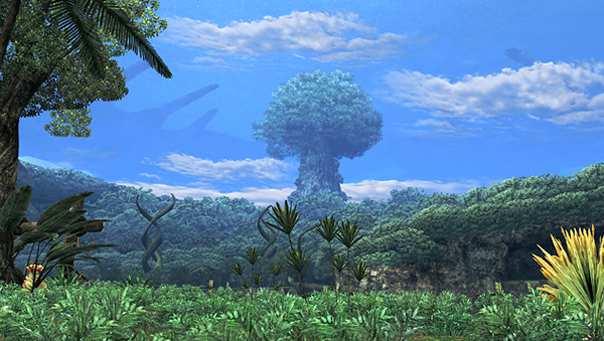Full disclosure: I’m a staff writer/reviewer at cubed3.com. The reviews I post here on my blog are original and don’t necessarily reflect the views of that site.
Screenshots were taken by me, using the 3DS software and Nintendo’s Miiverse connectivity. All content in them is obviously Nintendo’s, not mine.
Allow me to play the Song of Time and take you a little way back along my timeline.
When I was a little kid, sometimes I would sit and watch my uncle play an old game on his NES, The Legend of Zelda. Try as he might, he just couldn’t find the entrance to the 7th dungeon. I tried to help in whatever way I could, which, looking back, probably wasn’t much. This was before the internet, before walkthroughs and GameFAQs and what have you. I don’t think we ever found that dungeon. Not back then, anyway.
Flash forward a few years. I have an NES (and even a Super Nintendo!) of my own. Nintendo has recently released their brand-new system, the Nintendo 64. While at the grocery store with my parents, I found a Nintendo kiosk with a playable game called The Legend of Zelda: Ocarina of Time. I remember thinking “Hey, they made a third Zelda!” (Much later I would come to learn this was actually the latest in a whole series of them.) I tried to play it, but I didn’t know how to work the controller, and I couldn’t get Link to jump. I thought it was strange, and I gave up and left to catch up with my family.
More time went by. I Got a Nintendo 64 for Christmas, and eventually I had my own copy of Ocarina of Time. As far as fiction goes, there isn’t a lot in this world that I can easily say “changed my life” but this is one of them. Everything I thought I knew about video games, everything I thought I knew about fiction was turned upside down. New fields sprawled out before me, all thanks to an elf-looking kid in a green tunic.
Then came the next console game in the series, The Legend of Zelda: Majora’s Mask. This time I was ready and waiting.
It was a long wait.

I got the game, but it required a new accessory, the Expansion Pak. We couldn’t quite afford it, but the local video store did have them available for rent. So I played the game a little bit at a time, each a few weeks or months apart, until I finally got an Expansion Pak.
This game changed things as much as Ocarina did. Ocarina of Time invited me to a world I could play in. Majora’s Mask brought me to one that desperately needed saving; every NPC wandering the streets of Termina had their own fate that I could track over the course of three in-game days, a time loop that required attention and timing to get right.
The game became my favorite in the series, and still is. The series is dear to me, but no game after this one made me care so much. Sure, Midna is one of my favorite characters ever, and Wind Waker and Skyward Sword re-defined the titular Princess Zelda, but on the whole, NPCs and side quests are entirely skippable. The sense of urgency is gone, the trippy, otherworldly location of Termina remains unmatched.
While I eagerly await the next game in the series (which will hopefully arrive this year), the long-speculated Majora’s Mask 3D remake came out recently, and of course I showed up at midnight to pick up a copy.
Overall, the game has stood up to time well. Seeing these characters brought back to life is wonderful, and once again I find myself lost in that three-day time loop, struggling to help characters I know aren’t real, but boy oh boy does it feel like seeing an old friend from my childhood again.

Certain parts have been dumbed down or made easier, but they aren’t forced on you, and enough of the game has changed to keep things interesting. After all these years, the Kafei and Anju sidequest remains probably my favorite sidequest in video game history, and a certain moment toward the end, before the final boss, is as beautiful and breathtaking as it was the first time I experienced it.
Still, a certain sense of regret came from how much I already knew how to do. part of the game’s legend is in the mystery, in living each three-day cycle over and over, taking note of what happens, where, and when, until you can finally put things right. That doesn’t happen so much on subsequent playthroughs. There’s nothing to be done for it; a poster on reddit once said something to the effect of “If I could, I’d erase my memory of Breaking Bad so I could enjoy it for the first time again.” I would, too! But while I was at it, I’d throw a round of Majora’s Mask in there.
I don’t know where this series is going. I’m not even sure I know where I want it to go. But if, in the future, Nintendo decided to give Majora’s Mask a spiritual successor (the way they made A Link Between Worlds a spiritual successor to A Link to the Past), I’d welcome it. You know what they say: Whenever there is a meeting, a parting is sure to follow. However, that parting need not last forever.


